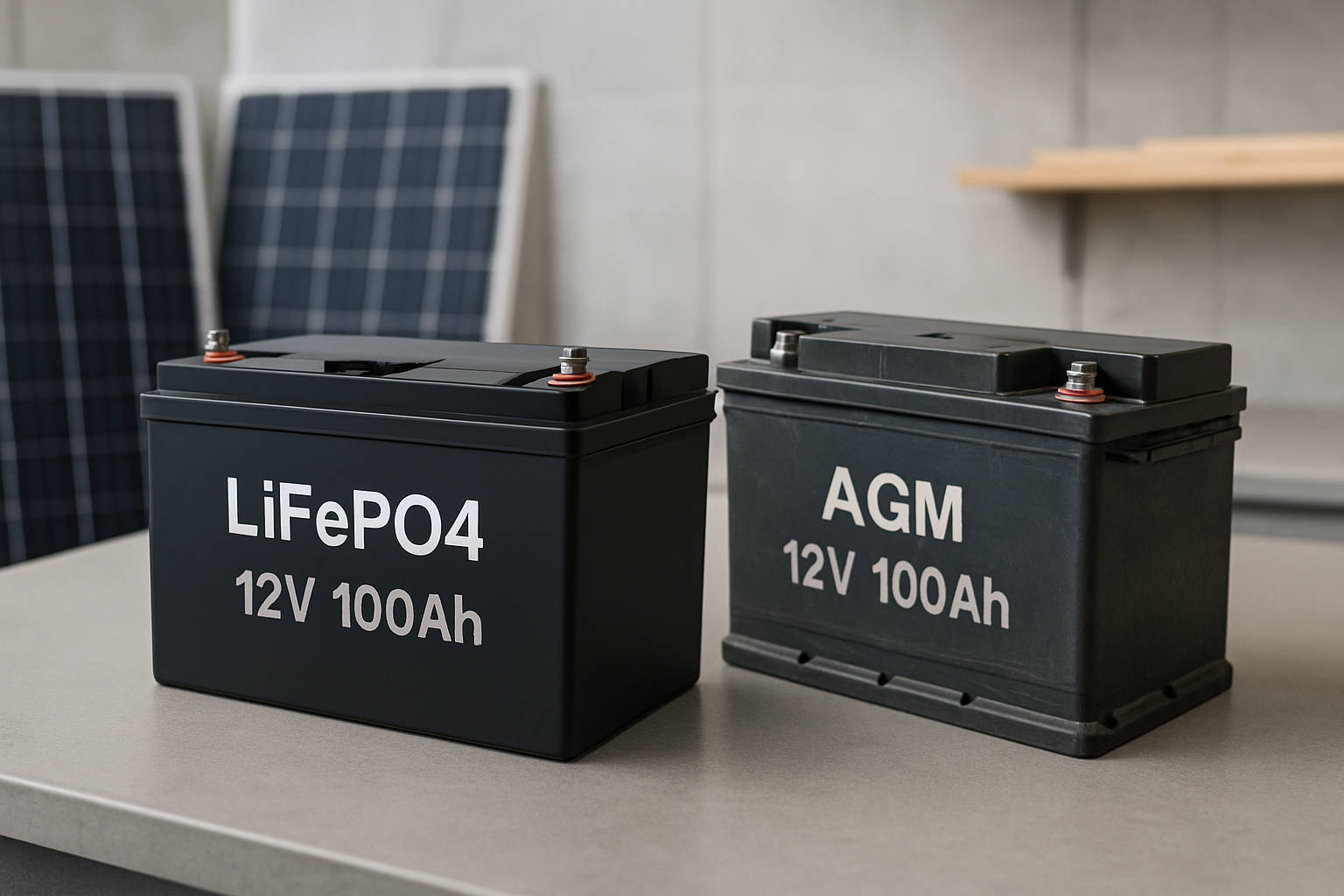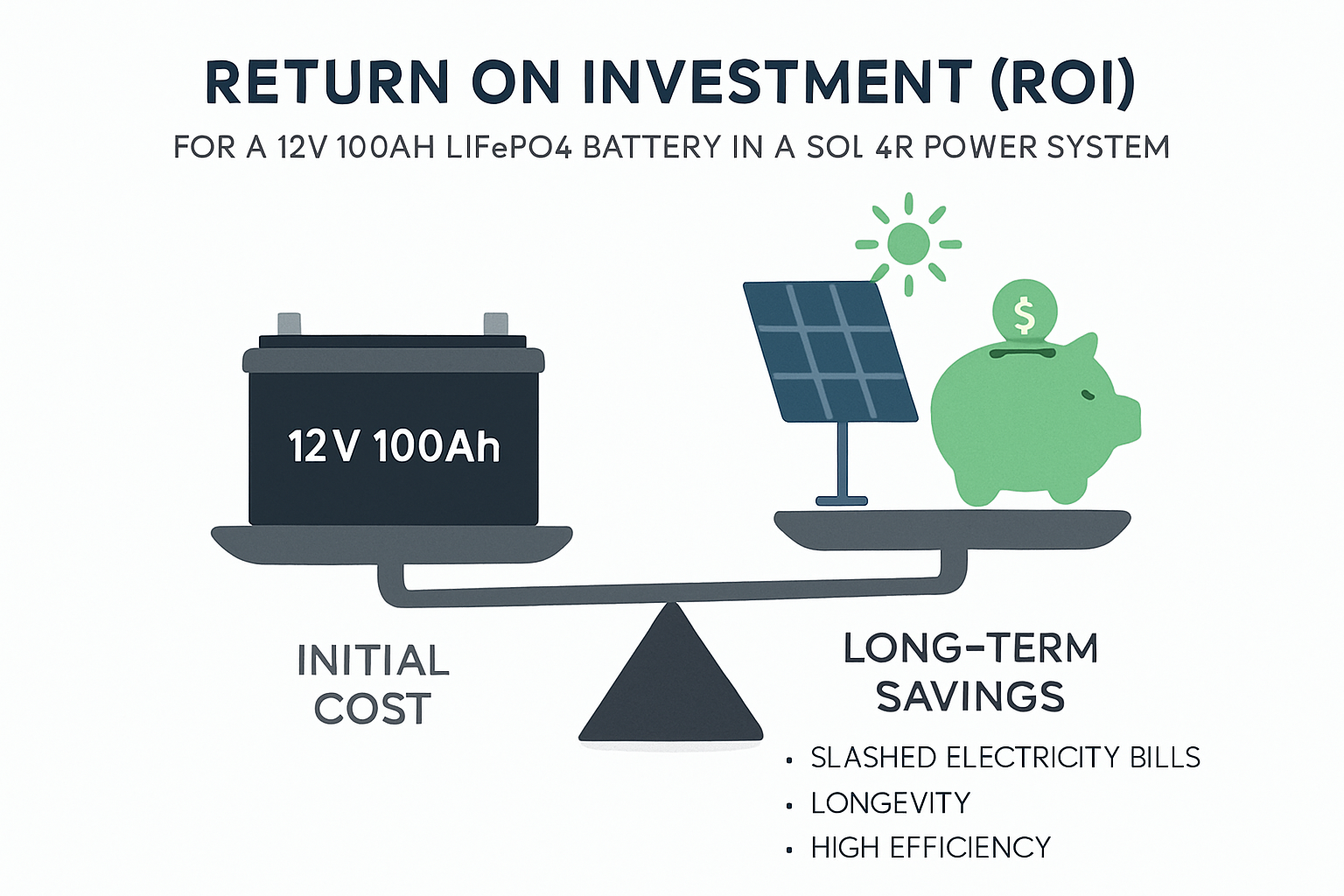When you invest in a 12V 100Ah LiFePO4 battery, you're looking for long-term, reliable power. Manufacturers often advertise impressive cycle counts, sometimes in the thousands. But what does that number truly mean for your solar setup, RV, or marine application? The answer isn't just about cycles; it's about how the battery is used day-to-day. The real-world lifespan depends on a combination of factors that go far beyond a single specification on a datasheet.
Understanding Lifespan: Cycles vs. Calendar Years
The longevity of a LiFePO4 battery is measured in two primary ways: its cycle life and its calendar life. Confusing the two can lead to unrealistic expectations. Understanding both is the first step toward maximizing your battery's value.
The Story Behind Cycle Count
A cycle count represents the number of times a battery can be fully charged and discharged before its capacity drops to a certain percentage of its initial rating, typically 80%. LiFePO4 (Lithium Iron Phosphate) chemistry is known for its remarkable durability. According to research from the IEA, LFP batteries offer excellent thermal stability and high durability, capable of up to 2,000 full cycles while maintaining strong performance. This inherent toughness makes them ideal for demanding applications. However, this metric is often established under perfect laboratory conditions—consistent temperatures and controlled charge rates.
Defining a 'Cycle' in Practice
A 'cycle' is not always a full 100% discharge followed by a 100% recharge. In reality, you might only use 30% of the battery's capacity one day and 70% the next. These partial discharges are less stressful on the battery than full discharges. As a result, a battery that is consistently discharged to only 50% of its capacity will last for significantly more cycles than one that is drained completely each time.
Calendar Aging: The Unseen Factor
Beyond usage, every battery experiences calendar aging. This refers to the gradual degradation of battery components over time, even if the battery is sitting idle. Internal chemical reactions continue at a slow pace, causing a gradual loss of capacity. For a 12V 100Ah LiFePO4 battery, this process is much slower than in traditional lead-acid batteries, but it still sets a practical upper limit on its lifespan, which is often around 10 to 15 years regardless of how many cycles it has completed.
Key Factors That Dictate Real-World Durability
Your habits and operating environment have a direct impact on how long your 12V 100Ah LiFePO4 battery will last. By managing a few key variables, you can significantly extend its operational life and ensure you get the performance you expect.
Depth of Discharge (DoD)
Depth of Discharge is arguably the most critical factor influencing battery lifespan. It refers to the percentage of the battery's capacity that has been used. A lower DoD per cycle puts less strain on the battery. For instance, regularly discharging your battery to only 50% can more than double its expected cycle life compared to discharging it to 100% every time.
| Depth of Discharge (DoD) | Estimated Cycle Life |
|---|---|
| 100% | 2,000 - 3,000+ |
| 80% | 4,000 - 5,000+ |
| 50% | 6,000 - 8,000+ |
| 30% | 10,000+ |
Operating Temperature
LiFePO4 batteries are sensitive to temperature. Extreme heat is the primary enemy, as it accelerates chemical degradation and can permanently reduce capacity. The ideal operating temperature is typically between 15°C and 25°C (59°F and 77°F). While these batteries can function in a wider range, consistently operating them at high temperatures will shorten their lifespan. As noted in the Innovation Outlook: Smart charging for electric vehicles report, an efficient cooling system is needed to maintain a constant temperature to achieve maximum lifetime and safety. Cold temperatures, on the other hand, don't typically cause permanent damage but will temporarily reduce the battery's available capacity and its ability to accept a charge.
Charge and Discharge Rates (C-Rate)
The C-rate measures how quickly a battery is charged or discharged relative to its capacity. For a 100Ah battery, a 1C rate is 100 amps, and a 0.5C rate is 50 amps. While LiFePO4 batteries can handle high C-rates, consistently charging or discharging them at their maximum limit generates excess heat and stress, leading to a shorter lifespan. For optimal longevity, it's best to use a C-rate of 0.5C or less for regular operation.
The Role of the Battery Management System (BMS)
A high-quality Battery Management System (BMS) is the brain of your LiFePO4 battery. It's not just a feature; it's an essential component that actively protects your investment and ensures a long, reliable service life.
The Guardian of Your Battery
The BMS is a small electronic circuit board inside the battery case that monitors and manages all aspects of its performance. Its primary protective functions include preventing over-charging, over-discharging, and over-current situations. It also provides short-circuit protection and monitors the battery's temperature, disconnecting the cells if conditions become unsafe.
How Cell Balancing Extends Lifespan
Perhaps the most important function of the BMS for longevity is cell balancing. A 12V battery is made of multiple individual cells connected in series. Over time, tiny differences can cause some cells to have a slightly higher or lower voltage than others. The BMS actively manages this by ensuring all cells are at an equal state of charge. This prevents certain cells from being over-stressed during charging and discharging, which is a common cause of premature failure in battery packs without a sophisticated BMS.
Translating Cycles into Years: A Practical Calculation
So, how do these factors translate into an actual number of years? Let's consider a couple of real-world scenarios.
Scenario 1: Off-Grid Daily Use
Imagine you use a 12V 100Ah LiFePO4 battery (which holds about 1,280 Watt-hours) to power an off-grid cabin that consumes 1,000 Wh per day. This means you're using about 78% of the battery's capacity daily (a 78% DoD). Based on the table above, you could expect around 4,000 cycles. If you cycle it daily, this translates to a lifespan of over 10 years (4,000 days / 365 days/year ≈ 10.9 years).
Scenario 2: Weekend RV Use
Now consider an RV owner who uses their battery for 60 days out of the year. Even at a high DoD, the battery is only completing 60 cycles annually. At this rate, the cycle life would theoretically last for decades. However, calendar aging becomes the dominant factor here. After 10 to 15 years, the battery's internal components will have degraded to the point where its capacity is significantly reduced, even with minimal cycle use. This end-of-life (EoL) point is typically defined as when the battery can only hold 70-80% of its original capacity, a standard referenced in IRENA's analysis of battery technologies.
A Final Perspective
The advertised cycle life of a 12V 100Ah LiFePO4 battery is an important starting point, but it doesn't tell the whole story. The real-world lifespan is ultimately in your hands. By respecting the battery's limits—avoiding consistent deep discharges, maintaining moderate temperatures, and using appropriate charge rates—you can easily achieve a service life of 10 to 15 years. The advanced chemistry of LiFePO4, protected by a robust BMS, provides a durable and resilient power source built for the long haul. A deeper understanding of these operational details is vital for a greater return on your investment. For a complete overview, you can review this ultimate reference on solar storage performance to master key metrics.
Disclaimer: The information provided is for educational purposes only and does not constitute financial or investment advice. Always consult with a qualified professional for your specific needs.
Frequently Asked Questions
How many years does a 12V 100Ah LiFePO4 battery last?
With proper care, a 12V 100Ah LiFePO4 battery can last between 10 to 15 years. This depends heavily on usage patterns, depth of discharge, and operating temperatures. In applications with infrequent use, calendar aging may be the limiting factor, while in daily use applications, cycle life is more critical.
Does leaving a LiFePO4 battery on a charger shorten its life?
No, a quality LiFePO4 battery with an integrated Battery Management System (BMS) can be left on a compatible charger. The BMS prevents overcharging by automatically stopping the current once the battery is full, which protects it from damage and degradation.
What is the difference between lifespan and cycle life?
Cycle life refers to the number of charge/discharge cycles a battery can endure before its capacity drops to a specific level (usually 80%). Lifespan is the total time, in years, the battery remains useful, which is affected by both cycle life and calendar aging (natural chemical degradation over time).





Leave a comment
All comments are moderated before being published.
This site is protected by hCaptcha and the hCaptcha Privacy Policy and Terms of Service apply.